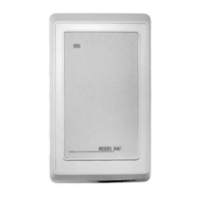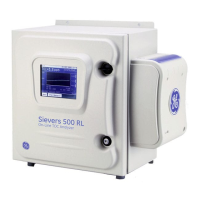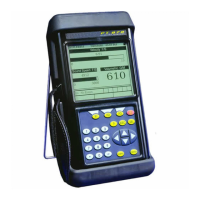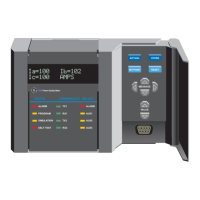Chapter 4. Error Codes and Troubleshooting
74 PanaFlow™ LC User’s Manual
All the possible XMT1000 error code messages are discussed in this chapter, along with the possible causes
and the recommended actions. When an error code is generated, it will appear in the lower left corner of the
LCD screen, as discussed in Programming Chapter.
If an error message appears on the display screen during operation of the XMT1000, refer to the appropriate
section of this chapter for instructions on how to proceed. You may be asked to contact BHGE. Providing all
of the diagnostic data and parameter information as in the Diagnostics Data Table prior to calling your local
sales or service center will help to speed up the issue resolution.
4.3 Flow Errors (E-Errors)
4.3.1 General Guidelines for Troubleshooting Flow Errors with Error codes
If the Error code on the LCD or Vitality PC software indicate E22: SingleChAccuracy or E23: MultiChAccuracy,
refer to the appropriate section below. Also, refer to Table 21 below for causes and recommended actions for
each Error code.
4.3.1a Single Channel Error
If only one channel is in error, the most likely causes are:
1. Incorrect programming on Error Limits or flow condition changes that now make previous programming
invalid.
2. Defective/Damaged cables, transducers, incorrect physical spacing, couplant, buffer or electronics.
After you have tried eliminating/correcting for any most likely causes mentioned above, if error still exists,
also check Process/flow conditions such as:
1. Excessive turbulence.
2. Discontinuities in fluid characteristics such as multi-phase flow, flashing, pockets of gas, presence of
bubbles or solid particles, cavitation or rapidly changing fluid type.
3. Extreme fluid properties, such as pressure or temperature.
4. Wax build-up inside the pipe.
5. Half-full pipe.
4.3.1b Multi-Channel Error
If more than one channel is in error, the most likely cause is changes in process/flow conditions such as:
1. Excessive turbulence.
2. Discontinuities in fluid characteristics such as multi-phase flow, flashing, pockets of gas, presence of
bubbles or solid particles, cavitation or rapidly changing fluid type.
3. Extreme fluid properties, such as pressure or temperature.
4. Wax build-up inside the pipe.
5. Partially filled pipe.
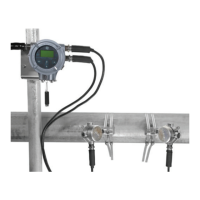
